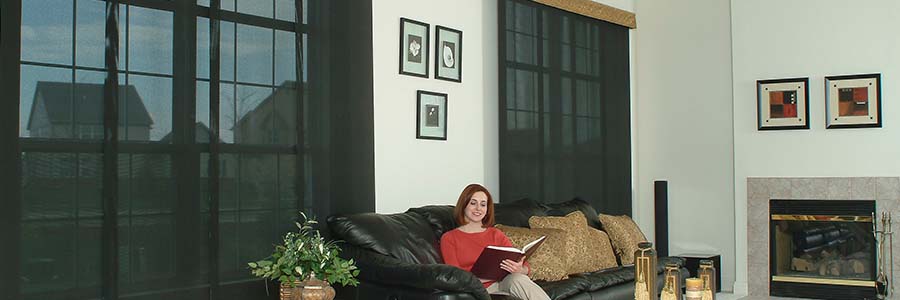
Affordable, attractive options for managing your home’s temperature and energy
Other than simply blocking sunlight, there are several types of window treatments that are specifically designed to insulate in the winter and reduce heat gain during the hotter seasons.
Summers in South Louisiana can be brutal on your house’s energy efficient quotient. Unless there’s a nice shade tree right outside the window, most Louisiana homeowners are subjected to intense sunlight on both the East and West sides of their house about 8 months of the year. So it’s important to have some type of window shade, interior shutters (like plantation shutters), or solar screen covering at least the eastern and western windows.
INTERIOR BLINDS
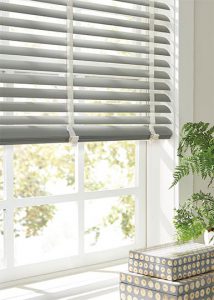 Starting with the most obvious, the slats in blinds can be adjusted to control both light and even ventilation. Tilting the slats up directs external light to bounce off the ceiling, thus diffusing it throughout the room. Angle the slats down, and you’ll get more of a sense of privacy. Close ’em up and you’ll block most of the light. Naturally, this makes them a pretty energy efficient solution for reducing summer heat gain. Energy.gov has even found that when completely closed and lowered on a sunny window, highly reflective blinds can reduce heat gain by around 45%!*
Starting with the most obvious, the slats in blinds can be adjusted to control both light and even ventilation. Tilting the slats up directs external light to bounce off the ceiling, thus diffusing it throughout the room. Angle the slats down, and you’ll get more of a sense of privacy. Close ’em up and you’ll block most of the light. Naturally, this makes them a pretty energy efficient solution for reducing summer heat gain. Energy.gov has even found that when completely closed and lowered on a sunny window, highly reflective blinds can reduce heat gain by around 45%!*
Even though vertical and horizontal window blinds may not be ideal for reducing heat loss during cold months, you can always combine draperies with your blinds to offer more insulating ability in winter. K to Z Window Coverings offers several lines of custom draperies and curtains that will complement any configuration of horizontal or vertical blinds.
INTERIOR PLANTATION SHUTTERS
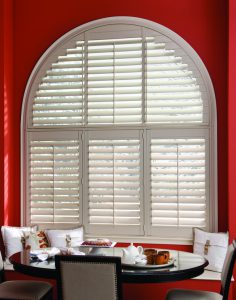 The type of energy efficient shutters Baton Rouge residents seem to prefer are Plantation Shutters. These interior shutters, usually made from wood or a composite material, are custom fitted to the interior sides of a window. Both wood shutters and vinyl plantation shutters are effective insulators, although the real wood shutter is a bit better at reducing heat transfer. Just like window blinds, these louvered shutters work best for summer shading.
The type of energy efficient shutters Baton Rouge residents seem to prefer are Plantation Shutters. These interior shutters, usually made from wood or a composite material, are custom fitted to the interior sides of a window. Both wood shutters and vinyl plantation shutters are effective insulators, although the real wood shutter is a bit better at reducing heat transfer. Just like window blinds, these louvered shutters work best for summer shading.
When the interior shutters are properly installed, they should fit snugly in window frames. This will help block the transfer of heat via air movement or convection and create an insulating barrier between outside temperatures and your home’s interior. You can combine shutters with other window treatments such as draperies for greater insulating ability.
Besides being good for energy conservation, plantation shutters also add add beauty, character, and light control to any room!
SEE OUR SELECTION OF SHUTTERS
Plantation Shutters From K to Z Window Coverings
ENERGY EFFICIENT SHADES
Window shades can be one of the simplest, affordable, and most effective types of window treatments for saving energy. One of the main reasons is that shades will reflect and/or block sunlight and, depending on the type of shade used, can provide a layer of insulation and air barrier to help reduce heat loss. If you are looking to maximize energy efficiency, is important to know which shade will work best for a certain window.
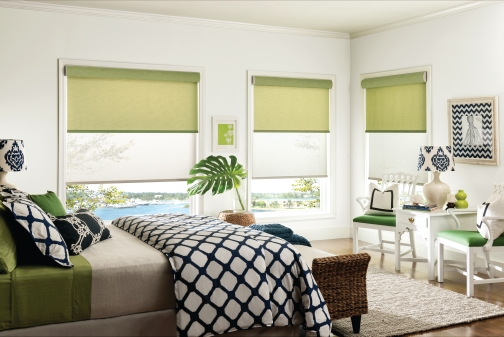
Dual Shades – highly reflective (white) on one side and heat absorbing (dark) on the other side – are ideal for energy efficient applications. By simply reversing the shade with the seasons, you will have more control over regulating heat loss & retention. Note that the reflective surface of a dual shade system should always face the warm side. Turn it outward during the cool seasons and inward when it gets hot. To be most effective for energy savings, dual window shades need to be drawn all day.

Roman shades are also efficient energy savers because they have layers of fabric arranged in folds (which provides both an air barrier and sound dampening abilities) and are often lined with energy-conserving insulation. Roman shades act as both an insulator and an air barrier which allows them to effectively control air infiltration more than many other types of window treatments. What we like about using Roman shades is the variety of styles, options for customization, and the ability to motorize these shades.

Pleated Shades are similar to Roman shades in that they are made of fabric or a cloth material. The difference is that this style of shades have pleated edges. This allows them to fold in on themselves when raised, but also helps create pockets of air that insulate windows from heat and cold.
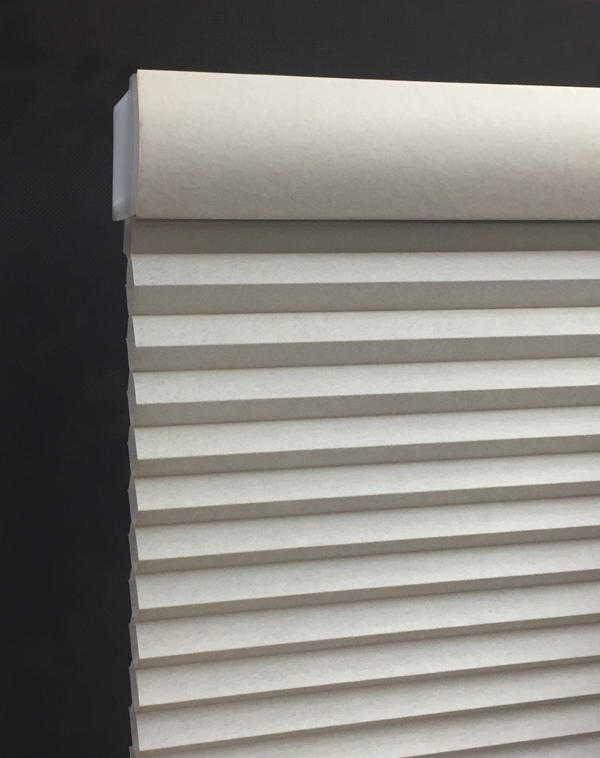
Cellular Shades and Honeycomb Shades are versatile types of window coverings that have a structure much like horizontal blinds. When viewed from the side, you can tell cellular / honeycomb shades are designed as flexible diamond-shaped cells made up of a solid lightweight cloth material. This structure allows them to slide down from the top, or up from the bottom. The big advantage with cellular shades is that the cell design creates pockets of air that insulate windows from heat and cold, thus reducing energy consumption. Their design helps block external light and even offers excellent sound absorption.
PROPER INSTALLMENT OF INTERIOR SHADES IS KEY! Mounting the shades as close to the glass as possible and right up against the adjacent wall will create a tight seal to minimize both heat gain and loss. All window shades sold by K to Z Window Coverings qualify for FREE INSTALLATION, so you’ll know the job is done properly.
Find out how to motorize and automate this type of window shade.
EXTERIOR SOLAR SHADES
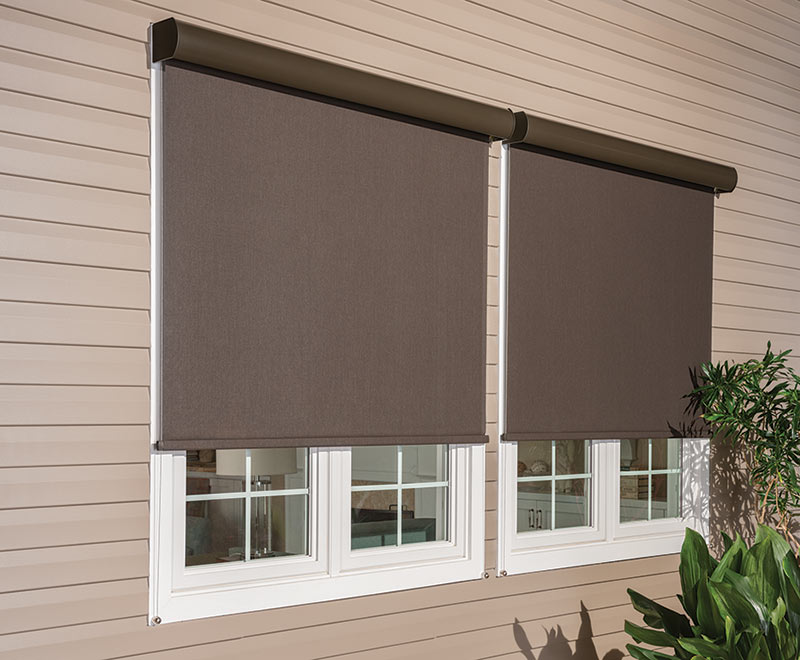
Solar Shades and Roller Solar Shades are exterior window screens designed to protect from UV rays and control light without eliminating it. Exterior solar screens are particularly effective when used on windows facing due East or due West, where the sunlight is most intense. Like sunglasses for your windows, solar screen fabrics reduce glare and dim bright light while allowing excellent views to the outside. There are several ways to motorize solar shades and screens.
ENERGY EFFICIENT DRAPERIES & CURTAINS
You may think that drapes and curtains are only for interior decoration, but my 2 decades of experience has proven they’re fantastic at helping regulate your home’s temperature!
Brandon Barton, Owner of K to Z Window Coverings
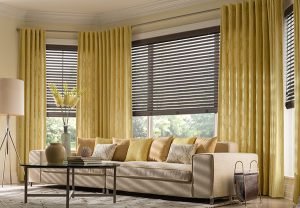 In addition to enhancing the decor of a room, several styles of custom drapes and curtains are ideal energy efficient window treatment solutions. They are great for blocking heat radiation and heat transfer in the summer, plus shutting out the cold and retaining heat during winter!
In addition to enhancing the decor of a room, several styles of custom drapes and curtains are ideal energy efficient window treatment solutions. They are great for blocking heat radiation and heat transfer in the summer, plus shutting out the cold and retaining heat during winter!
Like window shades and plantation shutters, draperies are most efficient when closed. They also are more efficient when they’re floor-to-ceiling drapes that fold back against the wall. This allows the fabric to better insulate the window and reduce drafts & heat loss through convection. It is also difficult to generalize about the energy performance of ALL the styles because a drapery’s ability to reduce heat loss and gain relies on a few factors:
- Type of fabric (closed or open weave)
- Color of the material (for reflecting sunlight)
- Thickness of the material
- If special blackout linings are used to protect from the summer sun
- If they are thermally lined drapes to better retain heat
- Their location (covering an East or West window)
- If a cornice is present at the top of the drapery
PRO TIP: Combining draperies with other window coverings like pleated shades, honeycomb shades, roman shades, blinds, or plantation shutters will significantly increase the energy efficiency of the entire window treatment!
Energy.gov has several great recommendations for using drapes to control energy loss:
During summer days, you should close draperies on windows receiving direct sunlight to prevent heat gain. Studies demonstrate that medium-colored draperies with white-plastic backings can reduce heat gains by 33%. Draperies also stay cooler in the summer than some other window treatments because their pleats and folds lose heat through convection.
When drawn during cold weather, most conventional draperies can reduce heat loss from a warm room up to 10%. Therefore, in winter, you should close all draperies at night, as well as draperies that don’t receive sunlight during the day.
To reduce heat exchange or convection, draperies should be hung as close to windows as possible. Also let them fall onto a windowsill or floor. For maximum effectiveness, you should install a cornice at the top of a drapery or place the drapery against the ceiling. Then seal the drapery at both sides and overlap it in the center. You can use Velcro or magnetic tape to attach drapes to the wall at the sides and bottom. If you do these things, you may reduce heat loss up to 25%.
Two draperies hung together will create a tighter air space than just one drapery. One advantage is that the room-side drapery will maintain around the same temperature as the interior space, adding to a room’s comfort.





